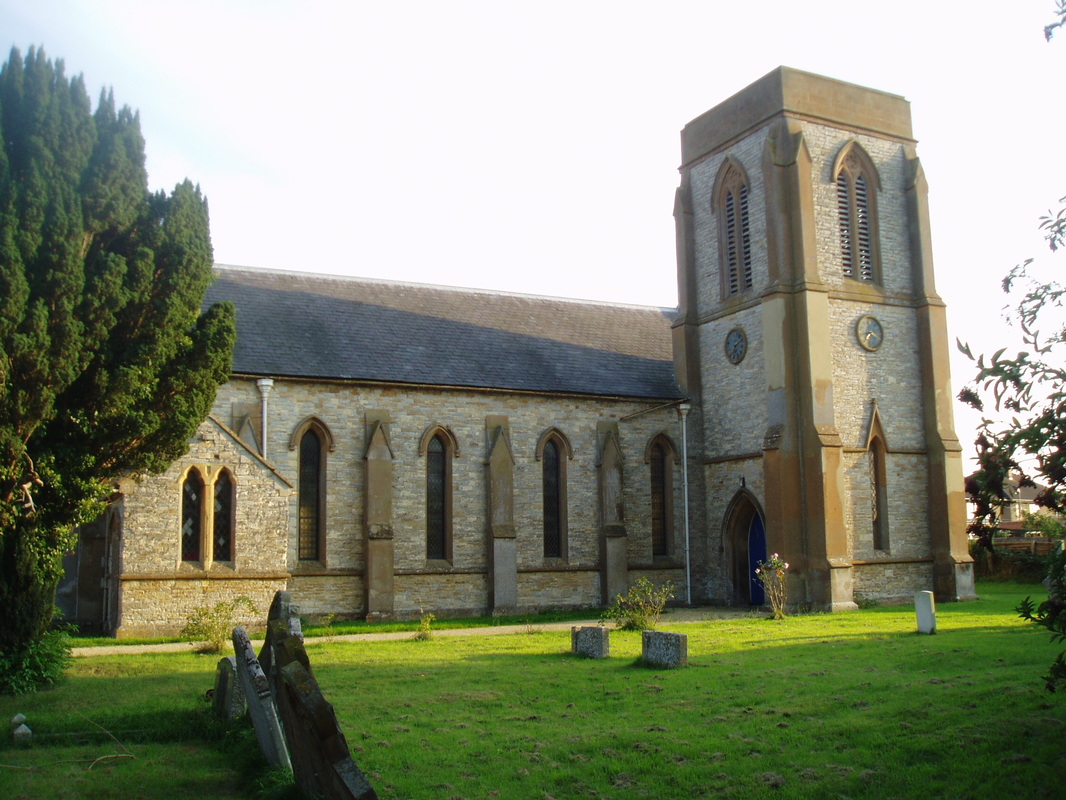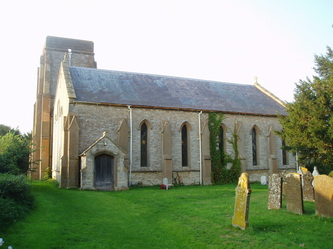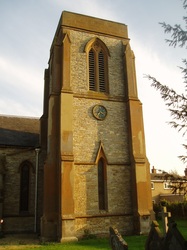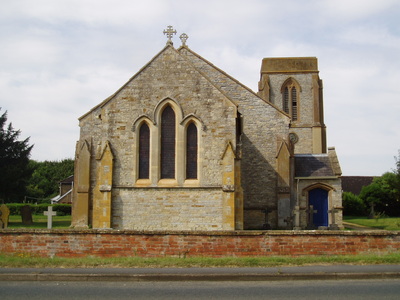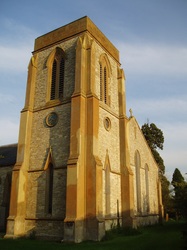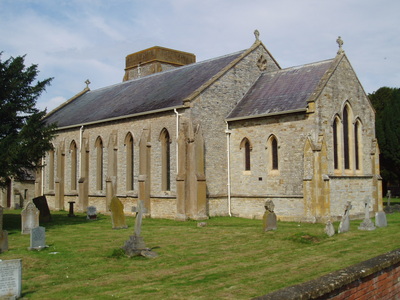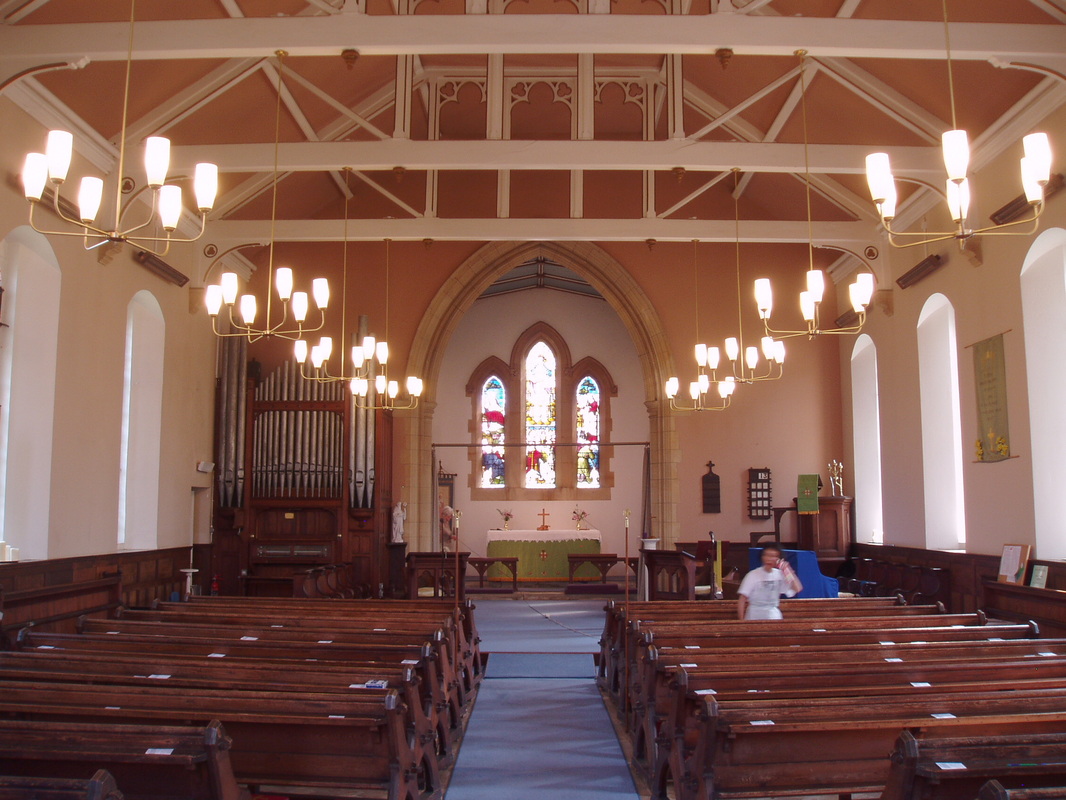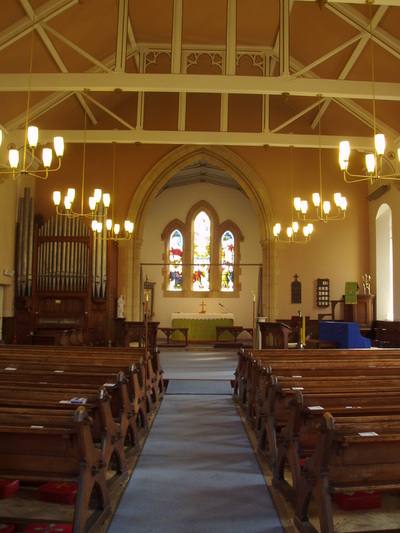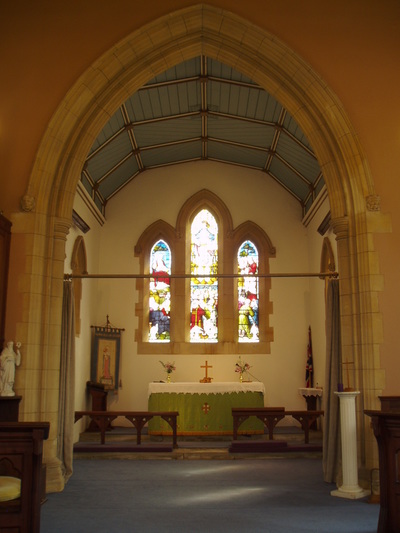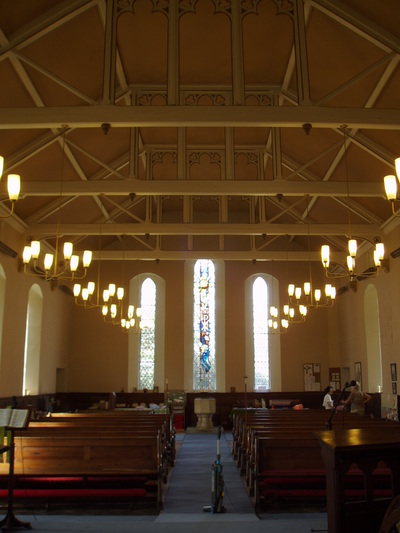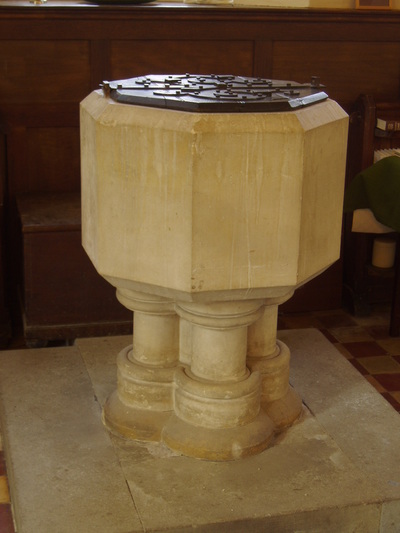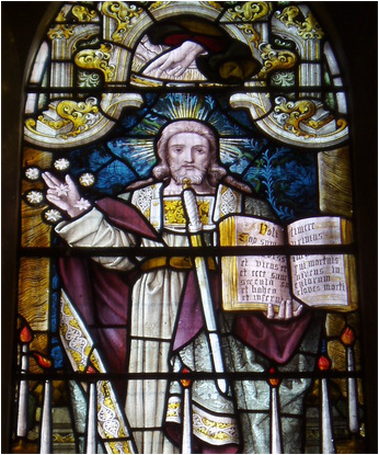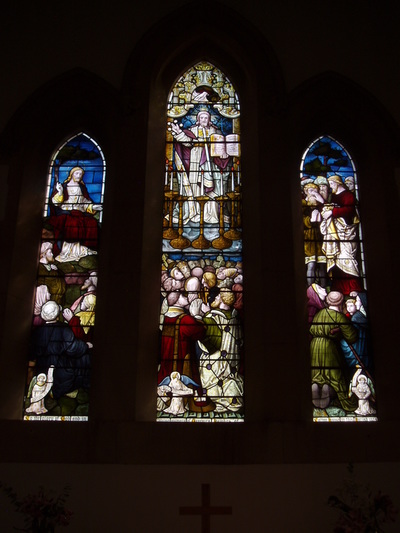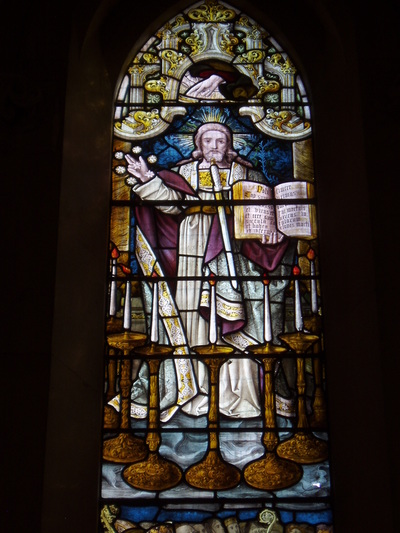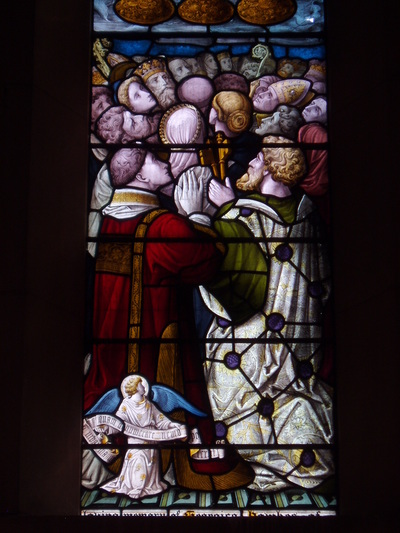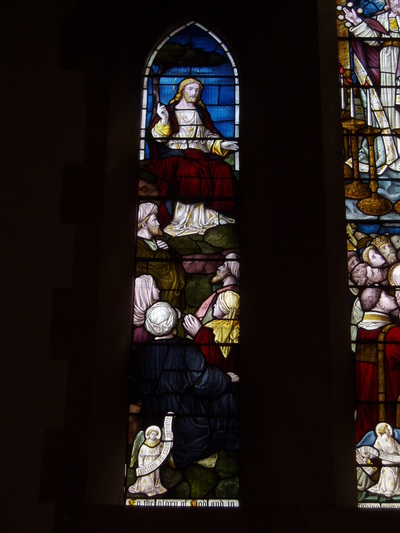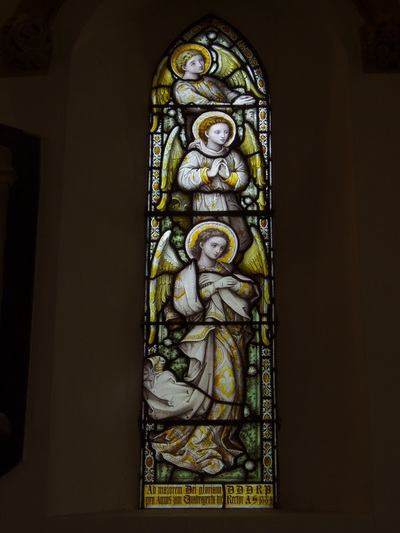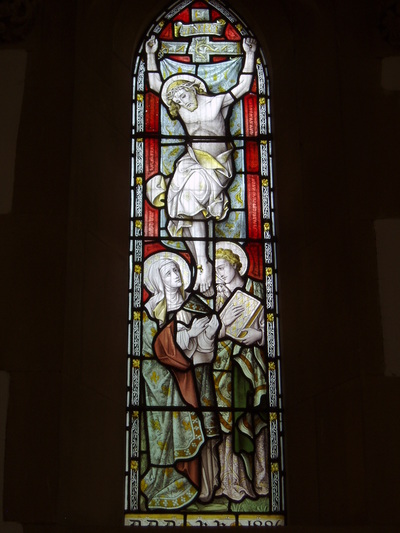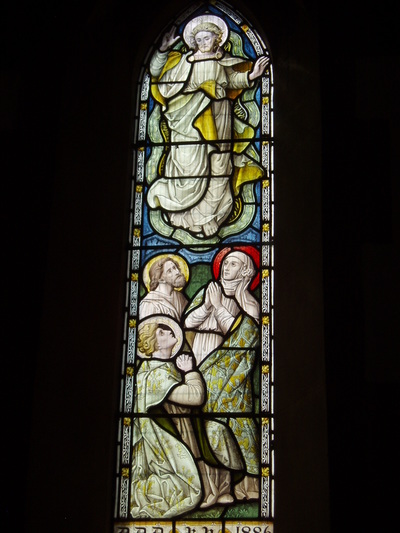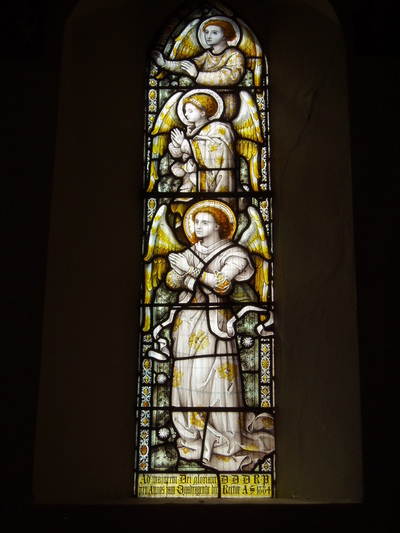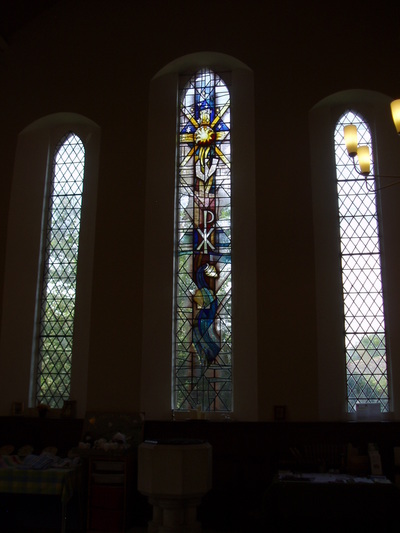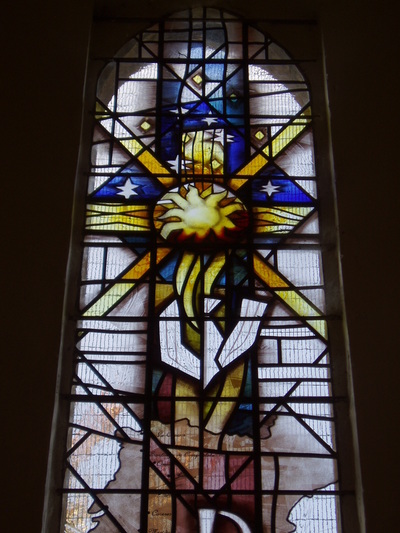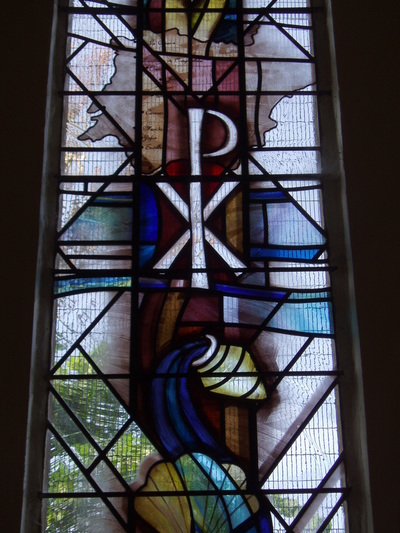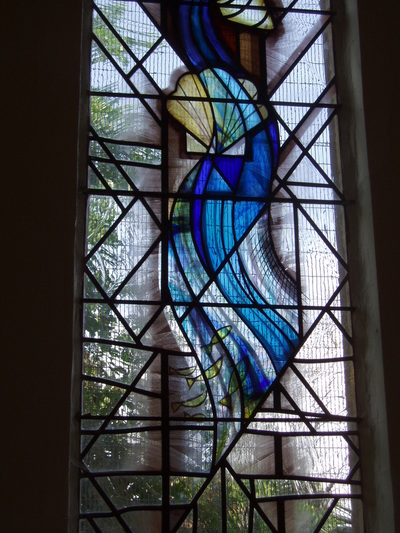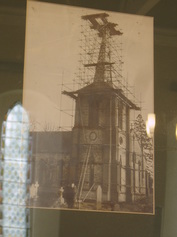Newbold on Stour - St David
St David's church at Newbold on Stour dates from 1833, very much in the spare, lancet-windowed form of Gothic then fashionable; the tower has had a somewhat boxy appearance since it's spire was removed in 1948. The two toned stonework is attractive (mostly white/grey sandstone with rich brown accents of ironstone).
The church stands beside the main road, but don't focus solely on it as almost opposite is a distant view over the grounds to Ettington Park Hotel, a more extravagant Victorian gothic fancy (a superior example of 19th century architecture that shouldn't be missed, but more on that in the entry for Ettington Park).
The church stands beside the main road, but don't focus solely on it as almost opposite is a distant view over the grounds to Ettington Park Hotel, a more extravagant Victorian gothic fancy (a superior example of 19th century architecture that shouldn't be missed, but more on that in the entry for Ettington Park).
This is a fairly large building for a so small a village and the interior could be described as 'barn-like' for it's large open space, uncluttered or divided by the pillars and screens one normally expects to find. The chancel appears curiously small and narrow by contrast, its relationship to the main vessel almost suggesting a normal arcaded nave with aisles may have been contemplated and then abandoned (three aisles in this space would have somewhat 'squeezed' the overall volume); the great open roof with its ornamental rafters adds a touch of decoration to relieve an otherwise fairly austere impression visually, as does the coloured glass at either end of the building.
Stained Glass
|
The windows of the small chancel are completely filled with late Victorian glass, the most significant of course being the east window of three lancets, dated 1884 and most likely the work of Lavers & Westlake. At first glance the central light appears to show Christ's ascension, but on closer inspection it is clear this is a rather more unusual depiction of the Apocalyptic Christ as described in the Revelation of St John, where the 'Son of Man' is described holding an open book, seven stars in His right hand and a sword issuing from his mouth; before Him stand seven lampstands and below a group of ecclesiastics looks up in adoration. The smaller lancets flanking this scene are more down to earth depictions of Christ as teacher and healer.
There are further but much smaller lancets situated in pairs on both the north and south sides (virtually invisible from the nave). These all appear to be the work of the same studio as the east window, with the two westernmost containing groups of adoring angels of the same date, whilst the easternmost portray the Crucifixion and Ascension respectively, both being dated 1886. The rest of the windows in the church are filled mainly with subtle decorative glazing with quarries and borders. At the west end is the church's newest feature, the central light of three more stepped lancets which was filled with stained glass by Derek Hunt in 2006 in a very modern style, with a striking montage of Christian symbols arranged in a columnular composition. The symbols chosen are ancient in origin, but here clearly contemporary in their stylised, angular forms, and a fitting statement for the church today, aptly reminding us that the church is a living building, and ecclesiastical art did not cease to be after the Victorian period (as so many other churches seem to suggest!). |
|
Before leaving don't miss the old photograph framed on the wall close to the north door (the main entrance, via the porch formed by the space beneath the tower); this shows the spire being dismantled in 1948; to me it looks as if it was surprisingly slender for such a sturdy block of a tower, but shows what a difference it would make to the church's external aspect had it still been there.
Having failed to get inside on previous occasions I was pleasantly surprised to find St David's open in summer 2014 and the very welcoming ladies inside who were cleaning this clearly well cared for building told me it is normally open now. There is nothing of great antiquity to be seen here, but I found it an attractive and inviting place nonetheless, and particularly admired the newly installed west window. Aidan McRae Thomson 2015 |
